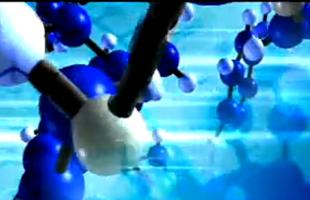Scientists from the US Department of Energy have developed a molecular production line for precise and reliable nanoconstruction, based on the idea of using DNA. for the connection of nanoparticles

Scientists from the US Department of Energy have developed a molecular production line for precise and reliable nanoconstruction, based on the idea of using DNA. for the connection of nanoparticles. Such reliable and cyclical nanomanufacturing is essential in order to utilize the unique properties of nanoparticles in applications such as biological sensors and devices for converting light rays into electricity. The study was published in the scientific journal Nature Materials.
The research team has previously used DNA, the molecule that stores the genetic code for life, to connect nanoparticles in a variety of arrangements, including a three-dimensional structure of nanocrystals. The idea is based on the fact that nanoparticles coated with complementary strands of DNA. - Segments of a genetic code sequence that bind only to each other in a very selective way - these strands are used to locate and join each other at a very selective level. By changing the composition of the complementary strands and those that are not, scientists are able to gain precise control over the forces of attraction and repulsion between the nanoparticles to obtain the desired structure. It should be noted that the DNA strands The short linkers used in this study were produced artificially in the laboratory and do not code for any protein, as the genes do in nature.
The last advance was the use of DNA connectors. These are in order to anchor some of the nanoparticles coated with DNA. to a solid surface, which contains greater rigidity, and to examine how the control over the connection of the particles changes. Such an array led to greater precision, and hence to a more predictable and cyclical construction method for obtaining nanoparticle structures.
"When a particle is fixed to a surface, it is no longer able to react with particles or other particles in the same way as a completely free particle reacts," explained the physicist Oleg Gang, research center. This is because the surface blocks about half of the particle's active surface. Link author-d NA or another particle, which reacts selectively and precisely with the fixed particle, allows the construction of desired nanostructures.
"By controlling the number and length of the DNA authors. We are able to change the distances between the particles and the resulting final structure," said the lead researcher. "Together with the high selectivity of the DNA strands, this surface anchoring method allows precise integration of nanocomponents into more complex structures."
"Instead of arranging millions upon millions of nanoparticles into three-dimensional nanocrystals, as we did in our previous research, this new method enables the arrangement of much smaller structures originating from individual particles.
The researchers' article describes the details of the production of symmetric connectors between two particles, called dimers, as well as the production of tiny and asymmetric particle clusters - both with high utilization and only low concentrations of by-products.
"When we arrange nanoparticles in a certain structure, new properties can emerge," emphasizes the researcher. "In this aspect, nanoparticles are analogous to atoms, which, when combined into particles, are sometimes able to exhibit properties that did not previously exist in the individual atoms. Our approach enables the efficient and precise construction of nano-"parrots". The properties of these new materials can have advantages for many applications."
For example, in their article the researchers describe an optical phenomenon that occurs when nanoparticles are joined together to form dimeric clusters. When an electromagnetic field reacts with the metallic particles, it induces a co-oscillation of the conduction electrons in the material. This phenomenon, known as plasmon resonance, leads to a strong absorption of radiation at a certain wavelength. "The size and distance between the connected particles affect the plasmonic behavior," explains the lead researcher. By adjusting these variables, scientists may be able to build accumulators in the future that absorb a variety of wavelengths and which will be used in solar energy conversion devices. The modulation of the plasmon response could also be useful as a new means of information transfer, or as a signal for a new family of highly selective biosensors.
Asymmetric aggregates, which the researchers also produced, allow an even higher level of control, and therefore these structures pave new ways to design and manufacture functional nanomaterials. The researchers have filed patent applications for this new construction method as well as for several specific applications of it.

2 תגובות
?
I didn't understand is it nanoparticles like in DNA loops or a combination of DNA and nanoparticles?